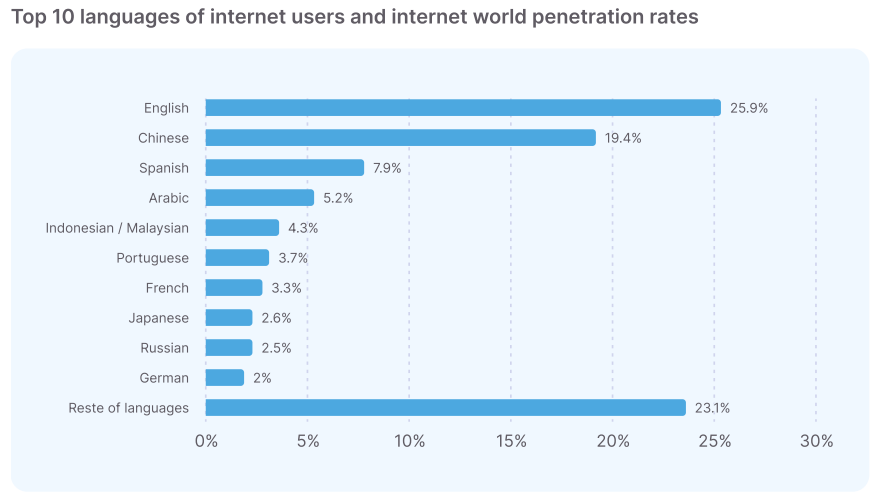Please enjoy this guest blog from the experts at Akeneo as they share the value added to commerce by taking a global approach to product information.
There’s no debate that there has been a dramatic shift in consumer behavior as a result of the past few years of the pandemic; eCommerce sales have surpassed $4.28 trillion since 2020, and are projected to rise above the $6 trillion mark in 2024. That means that almost a quarter of all retail sales are happening online, and that percentage is only going to get higher as new technologies offer innovation and never-before-seen shopping experiences.
What does this all mean? Shoppers are headed online and they’re not looking back, and this means your audience pool just became infinitely larger. With brick and mortar stores, you’re tied to a location, but this boom in eCommerce breaks down geographical boundaries and allows organizations to open up their virtual shop doors to a worldwide market.
That can be equally exciting and daunting. On the positive side, your organization can utilize cross-border markets as a source of revenue growth, and as a way to differentiate, and ultimately win against, your competitors. A wider net usually means more fish. But while expanding to a new market can bring real rewards to merchants, it can also be a stressful time for many brands and retailers as it can bring along the baggage of huge amounts of tedious and time-consuming work, like setting up hundreds of new localization and translation processes for every product and marketplace.
So how can you make your international expansion a success without breaking the bank or burning out your employees? The secret lies in your product information.
Why expansion requires high-quality product information
As a more diverse group of consumers and commercial buyers joins the online economy, it’s become increasingly more clear how crucial it is for companies to translate and adapt their digital content and product information to their customers’ local languages. This includes both literal language translations as well as localizing all product information and assets to fit the needs of your new customers.
Revenue growth is often significantly diminished by failing to cater to the local languages of a target country or region. Only 25.9 percent of the world’s population using the web today comes from English-speaking regions of the world. Translation into the top three languages – English, Spanish, and Chinese – reaches just over half of the world’s online population. What’s more, the majority of consumers, even those who generally feel confident and comfortable buying products from other countries, will flat out refuse to do business with your company if you don’t speak their native language.

Again, this applies to non-language localization as well, such as converting units of measurement (for example, changing measurements typically listed in centimeters to feet and inches when selling in the U.S.), modifying product catalogs to appeal to your new customers, or adapting product descriptions and visual assets to local norms. It could even include changing packaging or making additional disclosures to comply with the legislation and regulation in your new market.
Errors or inconsistencies in product data, meanwhile, including information such as size, weight, or other measurements, are a huge source of lost sales; two-thirds of consumers say they would stop buying a brand or go for an alternative product due to bad product information. If your product data is displayed in units of measurement that your customers aren’t familiar with, it will almost certainly lead to confusion about your products’ measurements or technical details, which in turn leads to increased return rates and decreased conversion rates.
Simply put, both B2B and B2C customers want, expect, and even demand the ability to conduct business in their native language, both literally and figuratively.
Taking control of product information with PIM
Customers need to feel that they can trust an organization and its products in order to make a purchase, and this trust cannot be built if they are struggling to read or even find product descriptions, understand product data, or view product assets. Fortunately, a good PIM system allows your company to more simply and efficiently localize product data for international markets. In this way, PIM serves as a fundamentally important component of your cross-border expansion efforts.
There’s no shortage of product information challenges that arise when expanding internationally. To conquer these challenges, you need a high-quality, purpose-built solution for managing and enriching product information — you need a PIM.
Without a dedicated solution for managing product information, your expansion efforts will struggle to get off the ground, much less become successful. Marketers and product owners will need to spend hour upon hour going through the tedious process of translating and updating info, while media managers will need to manually manage all the photos, videos, and other assets needed to expand effectively. This can turn expansion into a slow, painful process, one that eats away at revenue instead of boosting it.
A robust PIM, or product information management, solution, meanwhile can take the pain out of enriching and managing product information for cross-border commerce with a range of features designed to help you take control of product information. Akeneo PIM, for example, offers features that can help you expand to new markets with ease, including:
- Advanced rights management tools: Provides control and permissions access to third-parties like translators to help speed up enrichment
- Automation and a business rules engine: Automatically converts various values to support different units of measurement, which helps reduce the manual effort needed to enrich product information and ensure high-quality data
- Digital Asset Manager: Manages digital assets like images and videos independently from products themselves, making it easier to automate actions to edit them
- Validation workflow: Helps you put a data governance strategy in place to ensure oversight and accuracy of localized attributes to eliminate errors in publishes catalogs
- Versioning and publication features: Maintains multiple versions of product data at the same time to slash time to market and eliminate errors when expanding abroad.
By using a PIM tool to expand and enter new markets, your business can cut down time-to-market by as much as 300 percent, boost sales by 400 percent, and reduce returns, all while making your marketers more productive.
Get ready to go global with PIM! Find out how localizing your product information via can ensure your expansion efforts are successful. Learn how PIM can help your team conquer expansions with relative ease by reading Akeneo’s new eBook, Global Multilingual Commerce: Components of a Winning Cross-Border Strategy and their blog on Expanding To New Locales today!
As an Akeneo Gold Partner, Sitation is excited to help you get started!




